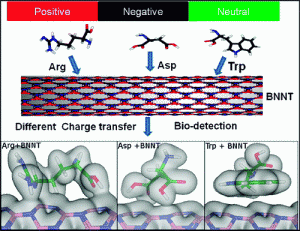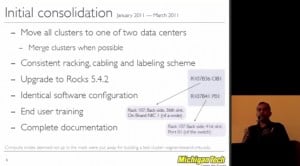 Physics researchers at Michigan Tech produced some results of interactions of boron nitride nanotube (BNNT) and amino acids through the use of density functional theory. The 2011 paper entitled “Sensitivity of Boron Nitride Nanotubes toward Biomolecules of Different Polarities” (DOI: 10.1021/jz2010557) created the following response in a recent experimental paper “Facile and Mild Strategy Toward Biopolymer-Coated Boron Nitride Nanotubes via a Glycine-Assisted Interfacial Process” (DOI: 10.1021/jp4073729):
Physics researchers at Michigan Tech produced some results of interactions of boron nitride nanotube (BNNT) and amino acids through the use of density functional theory. The 2011 paper entitled “Sensitivity of Boron Nitride Nanotubes toward Biomolecules of Different Polarities” (DOI: 10.1021/jz2010557) created the following response in a recent experimental paper “Facile and Mild Strategy Toward Biopolymer-Coated Boron Nitride Nanotubes via a Glycine-Assisted Interfacial Process” (DOI: 10.1021/jp4073729):
Inspired by these theoretical investigations, we set about to assess experimentally the interactions of BNNTs with glycine. We discovered that this simple amino acid is remarkably efficient in breaking up pristine BNNT bundles, yielding hydrophilic BNNTs dispersed in water as individual, debundled, nanotubes.
Authors of the theoretical study include Saikat Mukhopadhyay, Ralph H. Scheicher, Ravindra Pandey, and Shashi P. Karna.

